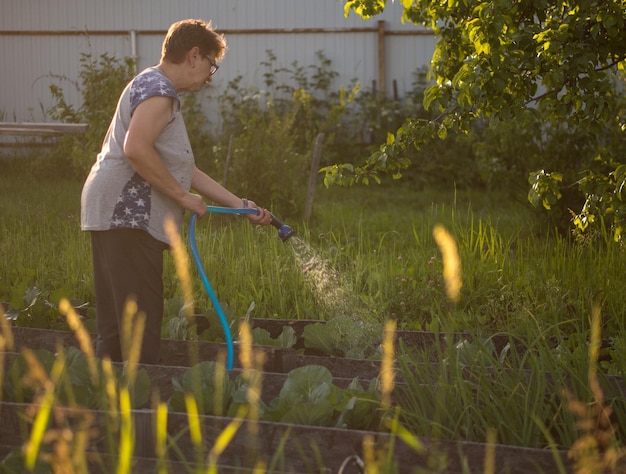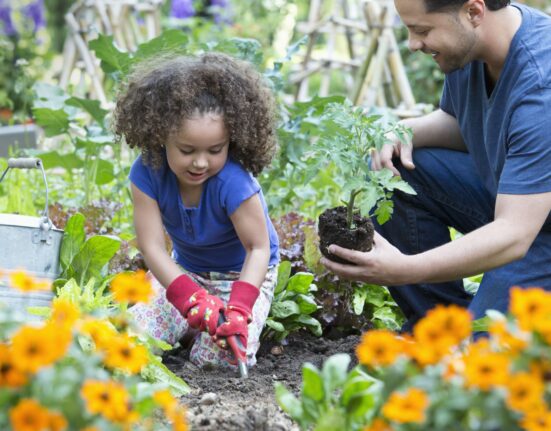If you’ve been wondering how to start a vegetable garden in your yard, read on! Growing your own veggies is one of the easiest ways to get more nutrients into your diet and add some fresh produce to your meals every day. Fortunately, starting a vegetable garden isn’t as difficult as it sounds. All you need is about a quarter of an acre — or even just one corner of it — and some time. Even if you don’t plan on selling any of the vegetables grown in your yard, keeping a vegetable patch can be a great way to spend leisurely weekends breaking up monotony and get some exercise while digging around. After reading this guide, you’ll know everything you need to know about what type
Make sure your soil is ready
Before you start planting in your yard, you’ll need to ensure that your soil is ready for gardening. This means that you should have removed all the weeds and debris from the area, watered it, and let it slightly dry out. Ideally, the soil in your yard will be dry enough to plant without being too arid or too soggy. But, if there are any water leaks in your area, such as a nearby irrigation pipe or a broken irrigation sprinkler, you’ll need to address them before you start your garden. And, if you’re using a raised bed, you’ll want to make sure that the soil level on all sides is the same so that the bed is level and stable. You can do this by placing bricks or boards under the bed’s corners to raise the soil level at that spot to the same level as the rest of the bed.
Select your spot


Once your soil is ready, it’s time to select a spot for your vegetable garden. If you’re planting a small yard space, such as just one corner of your plot, you can probably start a garden in the same spot each year. If you’re planning on growing vegetables in a larger plot, such as an entire, unutilized quarter acre, you’ll probably want to select a new spot. In any case, you’ll need to keep in mind a few things when selecting your garden spot. First and foremost, you’ll want to make sure that you have enough space. Ideally, you’ll want to leave one foot of space on all sides of your garden plot so that it can expand as you add rows and fill in the gaps between them.
Plan your garden layout
Once you’ve selected a spot, it’s time to draw up a plan for your garden. The first step in this process is to clearly determine how much you’ll need your plot to produce. If you want to produce enough veggies to feed your family a few times a week, you’ll need at least a quarter of an acre. If you want to produce more and sell some to earn some extra income, you’ll probably want to aim for one-third of an acre. If you have a large plot of land that you’d like to use for growing vegetables, you can always subdivide the area into smaller plots. This can make it easier to use part of your property while still ensuring that you have enough space to grow a sizable garden. Once you’ve determined how much space you need, you can plan your layout accordingly.

Image Source: FreeImages
Add nutrients to your soil
To get the most out of your garden’s space, you’ll also want to add nutrients to your soil. Vegetables need a lot of nutrients to thrive, so you’ll want to add organic fertilizer to your soil in two or three doses before you plant. These doses should be split throughout the growing season, with one being applied in the spring, one in the summer, and one in the fall. The best fertilizer for vegetable gardens is compost. Compost is a natural fertilizer made from organic material that has been aerated and broken down for months or even years. It’s rich in nutrients and bacteria that help plants grow. And, it’s relatively inexpensive to buy compared to many commercial fertilizers.
Plant the basics: greens and onions
If you want to get into growing vegetables, you’ll want to start with a few key ingredients. First, you’ll want to plant a green vegetable, as these are the foundation of any healthy vegetable garden. You can plant these indoors or outdoors, but they’re best when grown in the garden because they don’t produce much produce indoors. Greens include lettuce, spinach, and herbs such as parsley and cilantro. Choosing the right green will also help you increase the amount of produce that you get from your garden. Lettuce and spinach are the most common crops grown in gardens, but you can also grow cabbages, carrots, beets, and other vegetables. Next, you’ll want to plant onions. Onions can be grown on their own or with other vegetables. They’re sweet and mild, so you can use them in recipes or just eat them raw, but they’re also an excellent companion for other vegetables, as they’ll keep your other crops from sprouting weeds.
Add fruits and vegetables you might not grow in a traditional vegetable garden
While most vegetable gardens are devoted solely to greens, you can also add fruits and vegetables that don’t typically grow in a traditional vegetable garden. If you want to grow a variety of fruits and vegetables, you should seek out a community supported agriculture (CSA) program. These are subscription-based programs where you pay a membership fee and receive a weekly box of fresh produce. If you want to grow a large variety of produce, you also have the option of growing a melon or gourd. But, these are only suited for large properties, as they’re heavy-producing and require a lot of space. If you have a small plot of land and want to grow a large variety of vegetables, you should consider growing radishes, tomatoes, peppers, and eggplants.
Keep your patch healthy and protect it from pests


Besides selecting the right spot, you’ll also want to make sure that you keep your vegetable patch healthy and protect it from pests. First, you’ll want to make sure that you’re watering the patch properly and that the soil is evenly moist. If it dries out, add a bit of water; if it gets too soggy, allow it to slightly dry out. Next, you’ll want to make sure that you add compost to the plot every year. Compost is a natural fertilizer that’s rich in nutrients, weed killers, and beneficial bacteria that help to kill off weeds. And, you’ll also want to make sure that you don’t plant any harmful pesticides in your garden. Most harmful pesticides can be safely used for outdoor crops, but you’ll want to make sure that you keep them out of the plot if you want to protect your veggies from pests.
Conclusion
Growing your own vegetables is one of the easiest ways to get more nutrients into your diet and add some fresh produce to your meals every day. This guide will show you how to get started growing in your yard, from selecting the right spot to adding nutrients to your soil.









